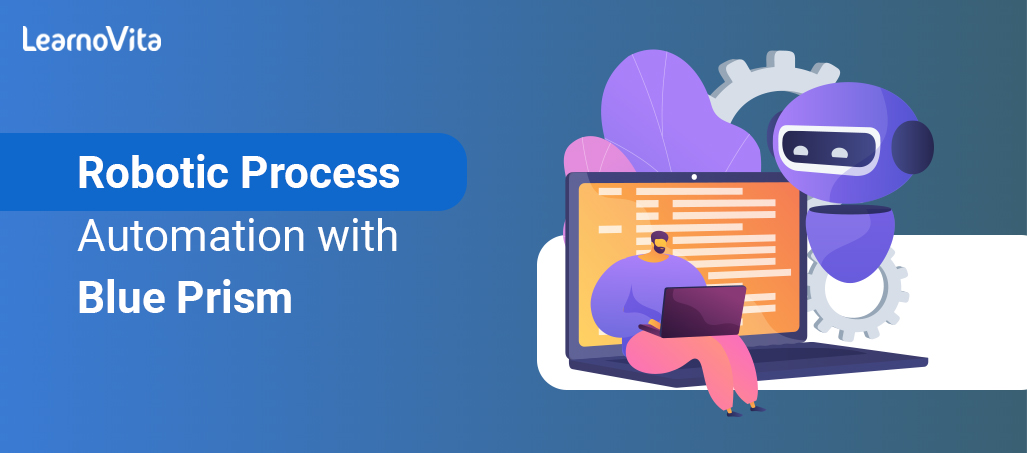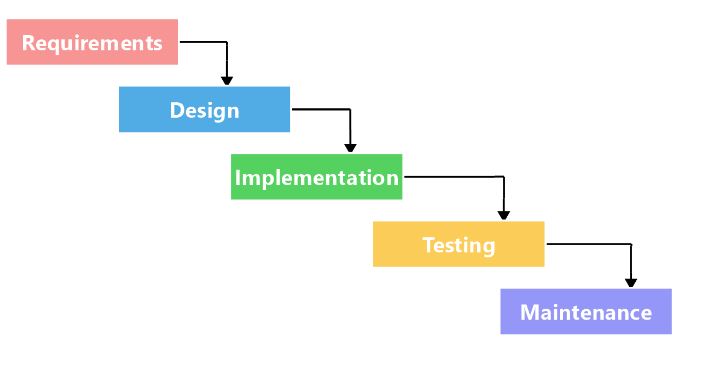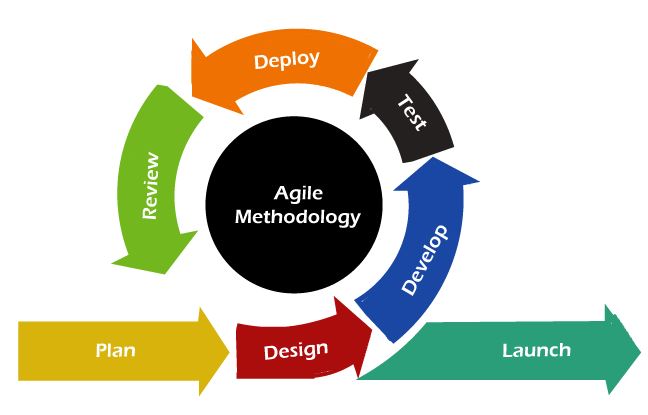
Difference between Waterfall approach and Agile approach
Last updated on 30th Jan 2023, Artciles, Blog
- In this article you will get
- What is a Waterfall methodology?
- What is Agile methodology?
- Advantages of a Waterfall model
- Advantages of a Agile model
- Limitations of a Waterfall model
- Limitations of a Agile Model
- Difference between Agile and Waterfall methodologies
- Conclusion
What is a Waterfall methodology?
A Waterfall Model methodology which is also known as Linear Sequential Life Cycle Model. Waterfall Model followed in a sequential order, and so project development team only moves to the next phase of development or testing if a previous step completed successfully.

What is Agile methodology?
Agile methodology is the practice that helps continuous iteration of a development and testing in as software development process. In this model, development and testing activities are concurrent, unlike a Waterfall model. This process allows the more communication between the customers, developers, managers, and testers.
Advantages of a Waterfall model
- It is one easiest model to be manage.
- Because of its nature, every phase has a specific deliverables and a review process.
- It works well for a smaller size projects where are requirements are easily understandable.
- Faster delivery of a project.
- Process and results are well be documented.
- Easily adaptable method for a shifting teams.
- This project management methodology is a beneficial to manage the dependencies.
Advantages of Agile model
- It is focused on client process.
- So, it makes a sure that the client is continuously involved during an every stage.
- Agile teams are an extremely motivated and self-organized so it likely to provide the better result from a development projects.
- Agile software development method assures that a quality of development is maintained.
- The process is a completely based on an incremental progress.
- Therefore, a client and team know exactly what is complete and what is not. This reduces a risk in development process.
Limitations of a Waterfall model
- It is not ideal model for large size project.
- More difficult to move back to the makes changes in a previous phases.
- The testing process starts once development is be over. Hence, it has more chances of bugs to be found later in a development where they are expensive to be fix.
Limitations of Agile model
- It needs an expert to take important decisions in meeting.
- Cost of implementing the agile method is little more compared to the other development methodologies.
- The project can simply go off track if a project manager is not clear what outcome wants.

Difference between the Agile and Waterfall methodologies
| Agile | Waterfall |
|---|---|
| It separates a project development lifecycle into sprints. | Software development process is divided into the distinct phases. |
| It follows the incremental approach. | Waterfall methodology is the sequential design process. |
| Agile methodology is known for flexibility. | Waterfall is the structured software development methodology so most times it can be a quite rigid. |
| Agile can be considered as collection of many various projects. | A Software development will be completed as a one single project. |
| Agile is quite flexible method which allows changes to be made in a project development requirements even if initial planning has been completed. | There is a no scope of changing requirements once a project development starts. |
| Agile methodology, follow iterative development approach because of this planning, development, prototyping and other software development phases may appear more than an once. | All project development phases like a designing, development, testing, etc. are completed once in a Waterfall model. |
| Test plan are reviewed after each sprint. | The test plan is rarely discussed during a test phase. |
| Agile development is the process in which the requirements are expected to be change and evolve. | The method is an ideal for a projects which have definite requirements and changes not at all be expected. |
| Agile introduces the product mindset where a software product satisfies needs of its end customers and changes itself as per a customer’s demands. | This model shows the project mindset and places its a focus completely on accomplishing a project. |
| Prefers a small but dedicated teams with the high degree of the coordination and synchronization. | Team coordination/synchronization is more limited. |
| Products owner with a team prepares requirements just about each day during project. | Business analysis prepares the requirements before beginning of a project. |
| Test team can take part in requirements change without a problems. | It is complex for the test to be an initiate any change in requirements. |
| Description of a project details can be altered anytime during a SDLC process. | Detail description needs to an implement a waterfall software development approach. |
Conclusion
To conclude, project can only give a desirable outcome if there is suitable methodology to drive an entire project. It totally depends on what type of regularization is need to monitor entire process. Agile and Waterfall approaches have a lot of differences which in a way are the metrics to pick up a suitable model for various businesses.
Are you looking training with Right Jobs?
Contact Us- RPA Developer Tutorial
- RPA blue prism tutorial
- RPA Tools Comparison
- Robotic Process Automation with Python Tutorial | Learn to Write Python Script Command in RPA
- Robotic Process Automation Developer Salary [ For Freshers and Experience ]
Related Articles
Popular Courses
- Hadoop Developer Training
11025 Learners - Apache Spark With Scala Training
12022 Learners - Apache Storm Training
11141 Learners
- What is Dimension Reduction? | Know the techniques
- Difference between Data Lake vs Data Warehouse: A Complete Guide For Beginners with Best Practices
- What is Dimension Reduction? | Know the techniques
- What does the Yield keyword do and How to use Yield in python ? [ OverView ]
- Agile Sprint Planning | Everything You Need to Know
